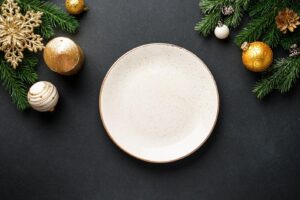Some paint and a paintbrush, it’s all you’ll need to transform and old piece of furniture into a new gorgeous element of your decoration. There are many techniques and ideas among you can choose to renovate your furniture, and today, we’ll talk about the dip painting technique.
 Source: PB&J Stories
Source: PB&J Stories
Would you like to give a second chance to that old chair from your grandmother? Do you have a boring table it’s useful but not too beautiful? Would you like to redecorate that old bench in your backyard and you don’t know how to do it? Take a look to the dip painting technique and discover how is it can be renovating your furniture with some paint.
Apart from being quite old and probably a bit deteriorated, the pieces of furniture we’ve mentioned before have something else in common: they all have legs. That is one of the requirements that a piece of furniture should meet to use the dip painting technique on it. Mainly, because this technique looks more impressive and decorative in this kind of furniture.
The other requirement is that you’re looking for a modern and special way of decorating them, because that’s the results you’ll get by using the dip painting technique.
What is the dip painting technique?
 Source: Miss Moss
Source: Miss Moss
The dip painting technique is used for painting pieces of furniture and objects and it consist of painting them so that it looks like they’ve been immersed into paint. It’s something as simple as that, simulating that we’ve introduced the legs of a chair, a table or a part of any other object into a paint container. Like this, part of the piece of furniture will have a different colour to the rest of it, providing a very modern and original touch to your decoration.
Due to the essence of the technique, the dip painting looks better in chairs, tables, benches and other pieces with legs, but it can also be used in other objects such as spoons (like in the picture above). You can use this technique in smaller objects, such as spoons or other tools, and use them like decorating elements you can place in your kitchen, living room or any space you like.
Choosing the perfect colour
 Source: Brit+Co
Source: Brit+Co
The selection of the colours is another important step. Sometimes, choosing a bright and intense colour can be the best option so that it drives the attention of everyone. Like in the case of the orange piece of furniture we commented some time ago.
Sometimes, pastel and pale tones can better fit your decoration. These ranges of colours tend to look great in Scandinavian style decorations because they combine very well with white and relaxing environments.
However, the most important thing when choosing the colours you want to use in your dip painting project is leaving your imagination fly.
A truly easy-to-do DIY project
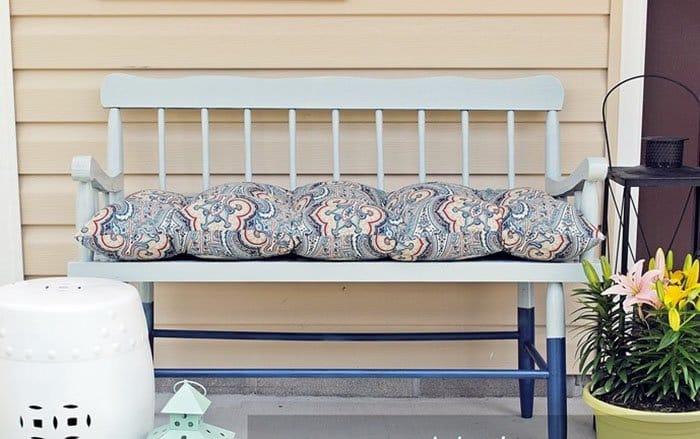 Source: PB&J Stories
Source: PB&J Stories
As an example of how easy it is painting a piece of furniture with the dip painting technique, we’re going to show you the project of a backyard bench.
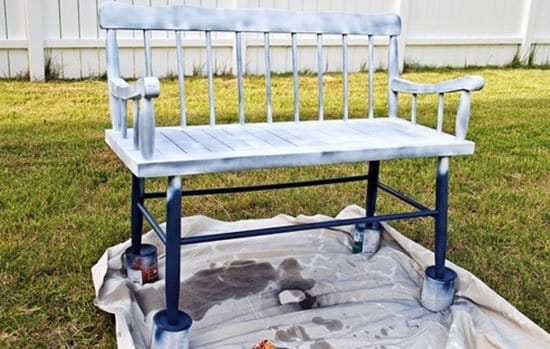 Source: PB&J Stories
Source: PB&J Stories
The first step is painting the legs with the chosen colour, after having sanded them down to prepare them for the paint and having cleaned the dust. For painting them, you can use spray paint or a paintbrush. You can even use the famous Chalk Paint to achieve a perfect matt finish (in this case it’s not necessary that you previously sand down the piece since the Chalk paint fixes well to any surface). Besides, it’s better that you apply two layers of paint, waiting for the firstlayer to dry before applying the second one.
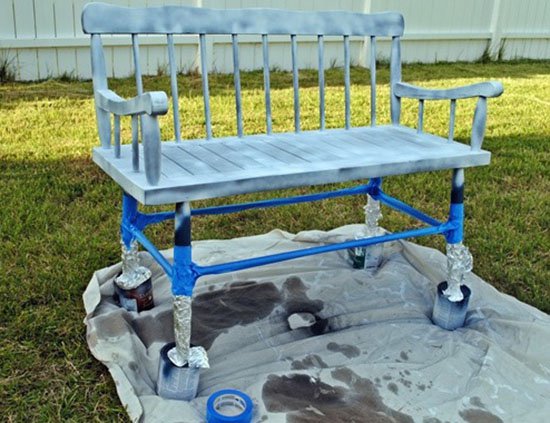 Source: PB&J Stories
Source: PB&J Stories
Then, the second step is covering with adhesive tape the legs and marking the limit of the colours of the legs. Measure it well so that all four legs look the same way and it will seem that the bench has been immersed in paint.
Use a different colour to paint the rest of the bench and apply two layers, like on the legs. Leave it dry, remove the tape and varnish the whole bench with matt spray varnish.
Get the opposite effect to the dip painting technique
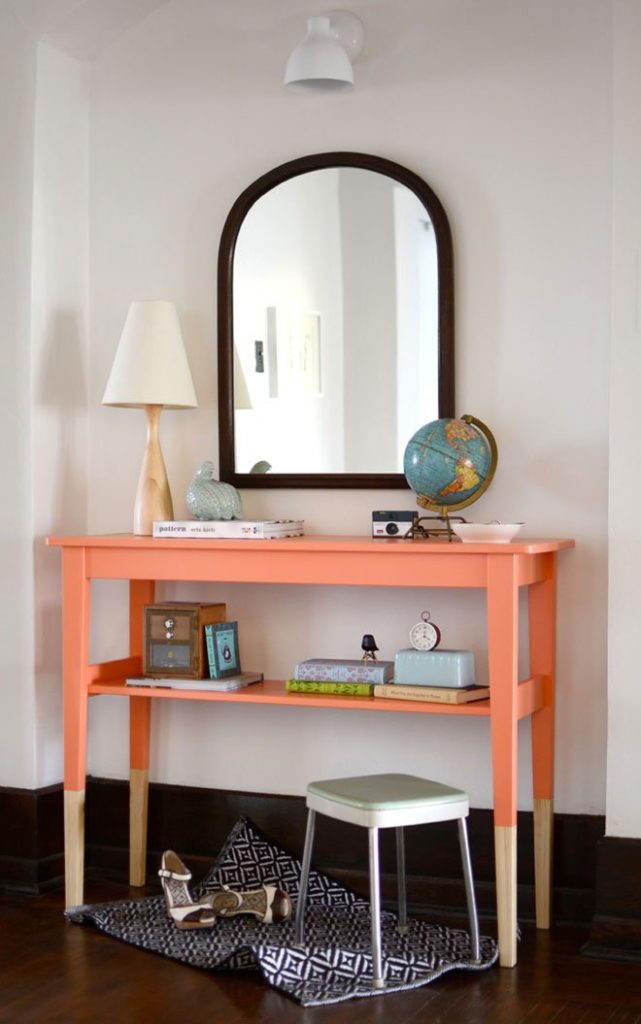 Source: Miss Moss
Source: Miss Moss
Another option is making the opposite technique to dip painting and it means that you leave the legs without painting. With this effect, it will seem that you’ve immersed all the piece of furniture except from the legs. This opposite effect of the dip painting technique is ideal if the furniture is made of wood, since the legs will show a gorgeous natural wood colours.
What do you think about the dip painting technique? Are you looking forward to use it?
Via decoración 2.0





